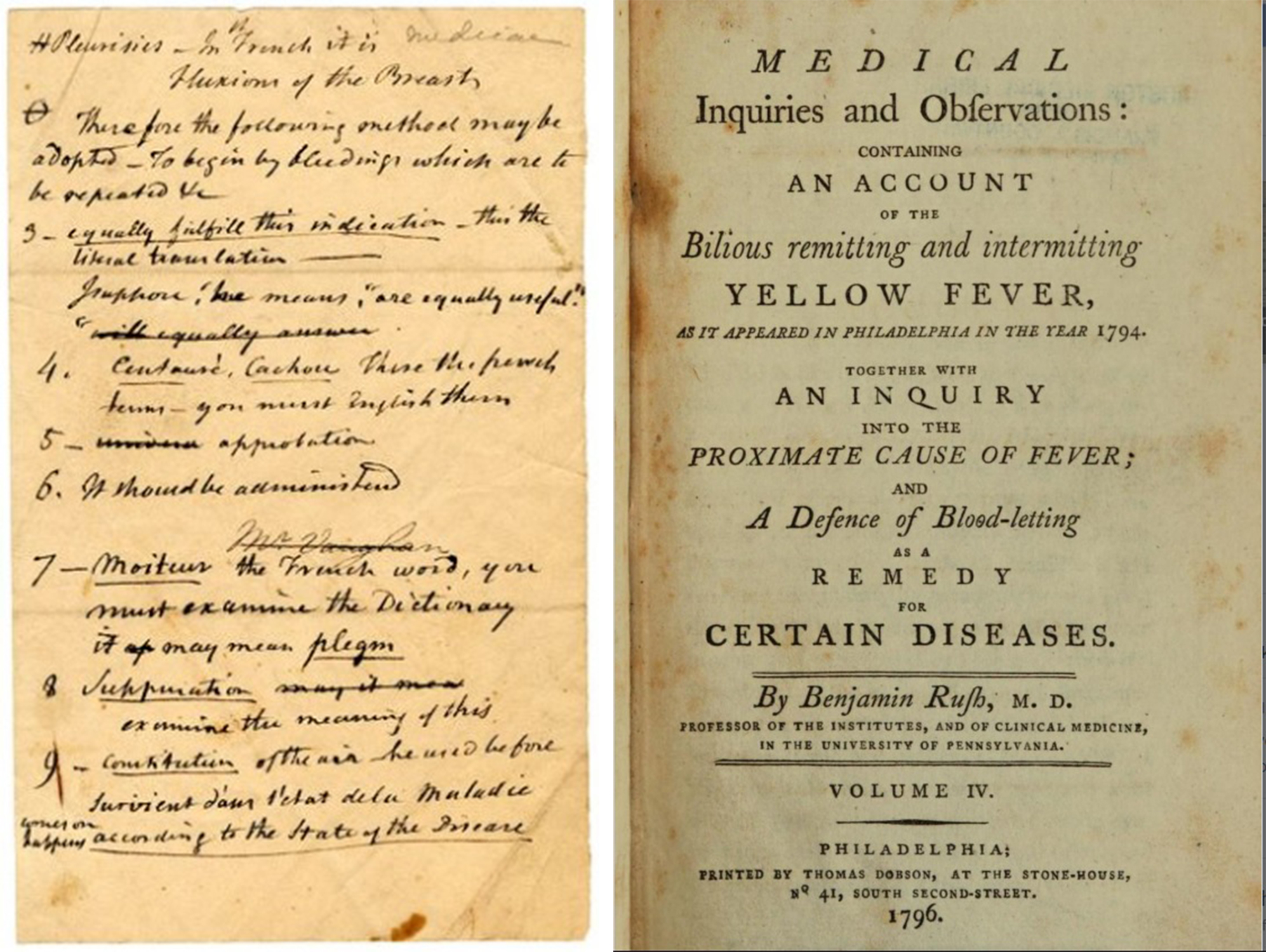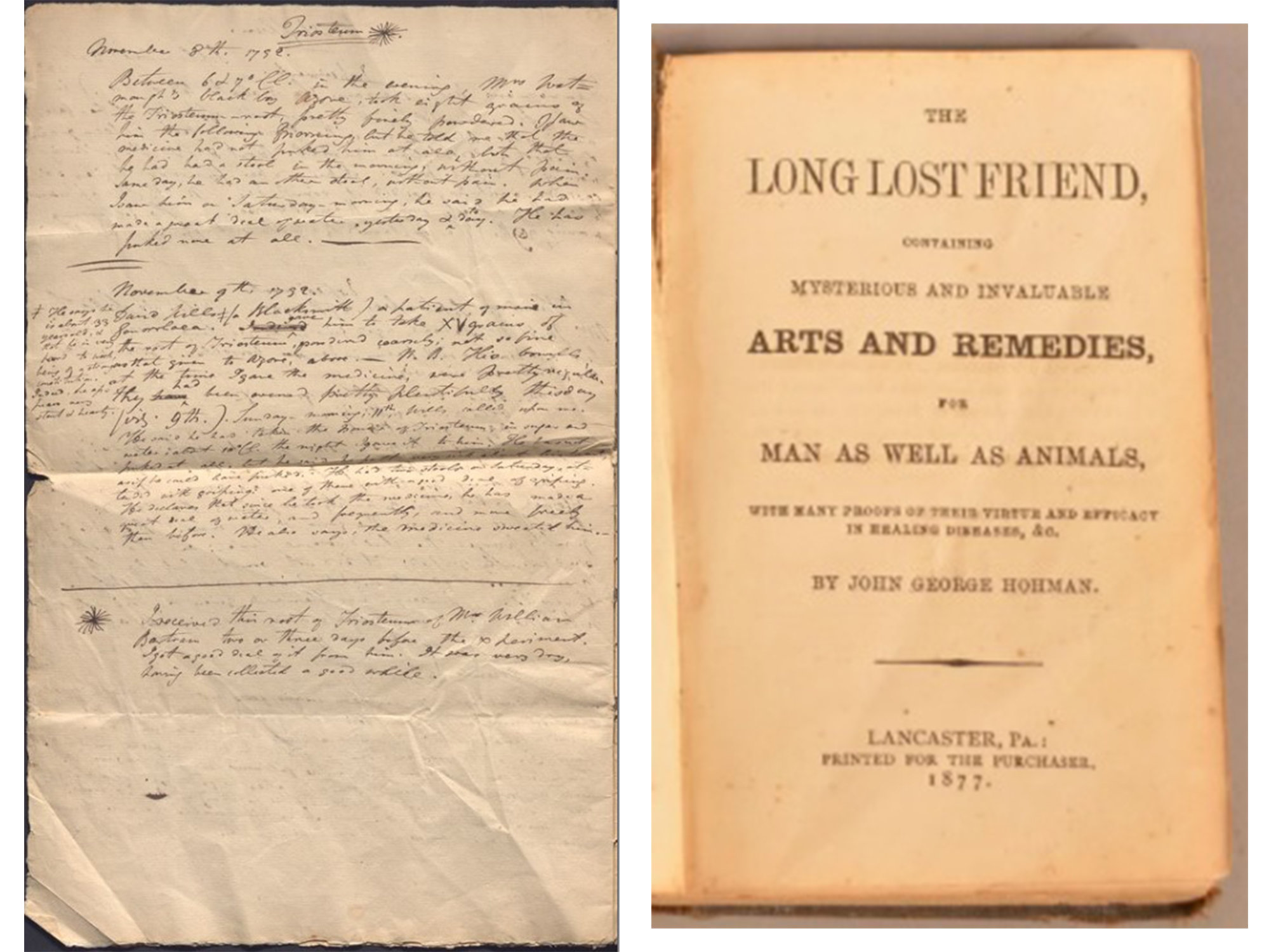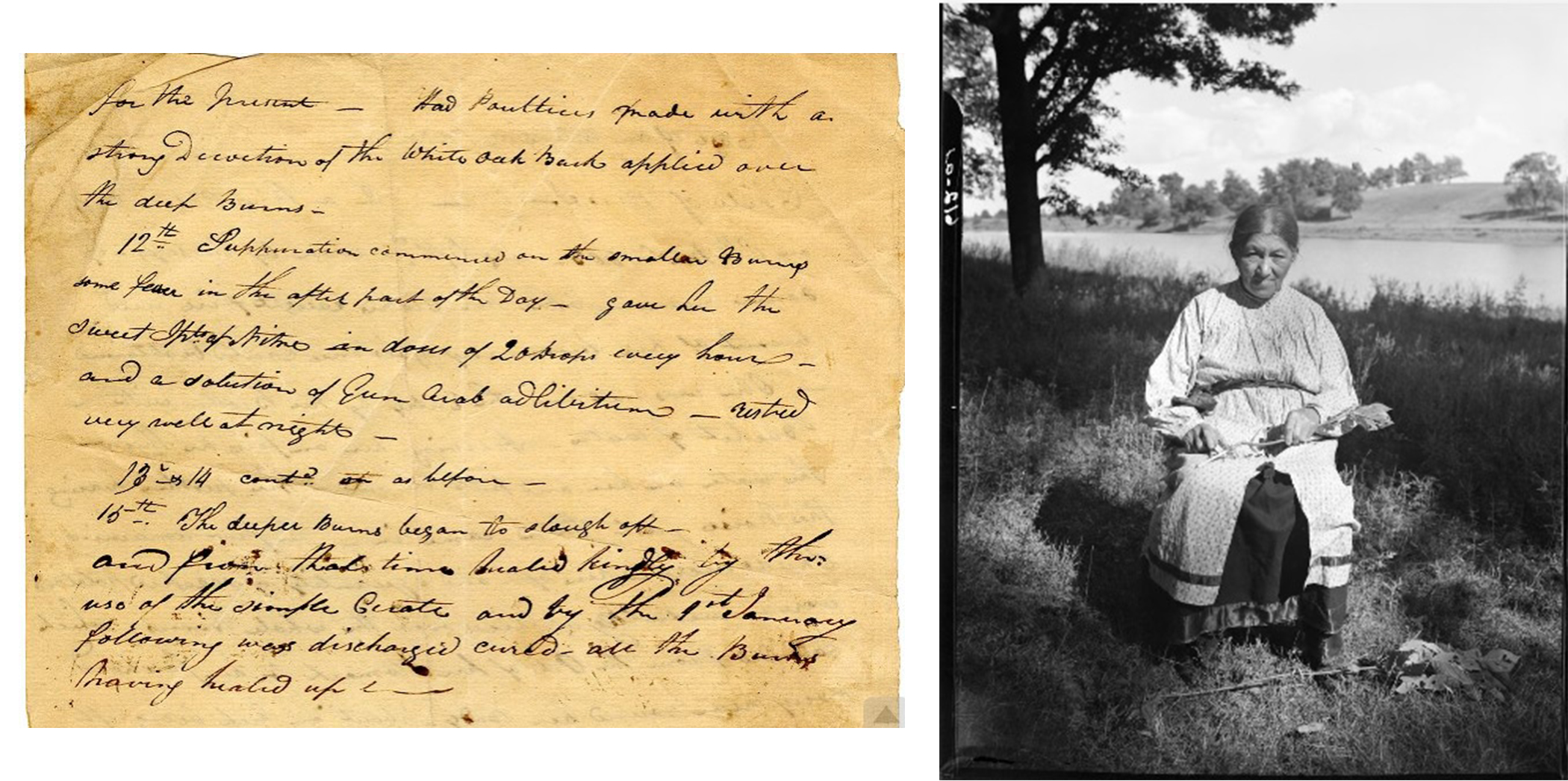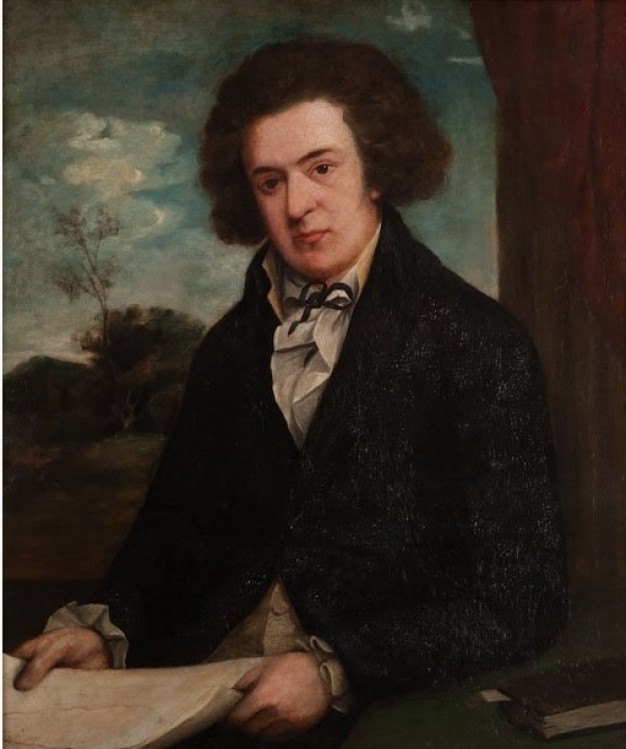Duly Noted: A Brief Survey of Dr. Barton’s Treatments
Benjamin Smith Barton (1766-1815) was an early member of the American Philosophical Society (APS), who distinguished himself in many ways. He wrote the first botany text book in America, served as a physician at Pennsylvania Hospital (the first institution of its kind in the colonies), and taught medicine, botany, and natural history at the newly formed University of Pennsylvania.* Barton’s passion for pursuing these complementary subjects continued through his lifetime, as is evidenced in his papers now held at APS. Additionally, his portrait by Samuel Jennings is displayed in Library Hall’s Board Room (see above).
While there are many themes in Barton’s papers that merit exploration (his collection relates to both our Early American and History of Science holdings), I was interested in examining a few treatments found in his medical notes. These records are a fascinating compendium of 18th-century medical thought, which reflect knowledge that Barton gained from a variety of sources—through both formal training and informal communication—with the common denominator being a dedication to public health. Barton’s medical notes document his participation in gathering and disseminating information with a healing network of trained physicians and lay practitioners.** While this brief survey touches on a few examples, they provide a fascinating snapshot of medical treatments that happened in the late 18th and early 19th century.

Formal influences in Barton’s medical practice can be attributed to the School of Medicine at the University of Edinburgh, which he attended from 1786 to 1788. However, due to financial hardship and other challenges, Barton was unable to complete his studies there. (He would later obtain a medical degree from the University of Kiel in 1796). When Barton returned to Philadelphia, there was some continuity with his Scottish education, because many of his peers received training in Edinburgh, as well. Interestingly enough, the thistle insignia of the University of Pennsylvania’s Medical School acknowledges the relationship between the two communities. Barton also worked alongside Edinburgh-trained doctors at Pennsylvania Hospital, such as his mentor, Benjamin Rush (1746-1813).
As another APS member, Rush was a recognized physician, civic leader, and father of American psychiatry. While we question the practice today, Rush advocated for blood-letting, a common treatment in the 18th century. Given this context, it’s not surprising to see that Barton’s medical note on pleurisy recommended “bleeding” as the first course of action (see above, left). It echoes the philosophy espoused in Rush’s book, Medical inquiries and observations: containing an account of the bilious remitting and intermitting yellow fever, as it appeared in Philadelphia in the year 1794. Together with an inquiry into the proximate cause of fever; and a defence of blood-letting as a remedy for certain diseases (see above, right). A copy of this volume is part of the APS rare book collection.

Other influences that may have informed Barton’s approach to medicine were European folk remedies. Barton was born and raised in Lancaster county, which was settled by German-speaking immigrants escaping religious persecution (also known as the Pennsylvania Dutch or Deitsch).*** While it’s not clear how much contact Barton had with this group, he did correspond with a number of lay practitioners when the Deitsche community made up half of the state’s population. It is possible that some of these treatments were passed along to Barton via direct interactions with the Braucherei (i.e. folk healers), or indirectly through colleagues who had interacted with them.
For instance, one of Barton’s medical notes (above left) mentions use of Triosteum, also known as horse gentian or feverwort, for intestinal issues. This herb was recommended as a similar remedy by John Georg Hohman in Der lange verborgene Freund or The Long Lost Friend (above right). While Hohmann’s manual was published after Barton’s death, it documents treatments that have been orally transmitted by Brauchers for generations. Incidentally, the book has gone through several reprints, with APS owning a 1877 edition in English. It suggests that even at this late date, there was interest in folk medicine among the non-Deitsche members of the community.

The final comparison I’d like to make touches on Barton’s enduring interest in Indigenous cultures. His fascination began when he accompanied his famous uncle, David Rittenhouse (1732-1796), on a trip to survey Western Pennsylvania in 1785. Barton’s encounters with Native peoples during this time sparked a life-long exploration of their history, language, and medicinal knowledge.
For the purposes of this post, I’d like to focus on one of Barton’s medical notes, which describes his use of white oak bark in the treatment of a burn (see above, left). Similarly, tree bark was also used by some tribes to heal sores and prevent infection. While it’s not clear how Barton may have received this information (more research is needed), the situation is similar to the previous comparison, where he may have heard about the technique from a tribal member, or indirectly from an associate.
During my research, I touched upon the Society’s extensive holdings that relate to Indigenous Cultures, Anthropology, and Linguistics. I was able to find examples of Haudenosaunee people using dogwood bark for this purpose, as well as how they harvest it (see above, right). While this photograph was obviously taken after Barton’s death, it is another example of a treatment that Barton could have conceivably learned during his lifetime, since it’s been passed down through a lineage of Indigenous healers.
* Barton also taught at the University’s predecessor institution, the College of Philadelphia.
** I am indebted to APS colleagues who contributed to the finding aid for the Violetta Delafield and Benjamin Smith Barton Collection, where I gleaned much of this information.
*** “Dutch” is actually a misnomer and an Anglicized version of Deutsche (in high German) or Deitsch (in their dialect). While some scholars refer to this population as Pennsylvania German, this identity is not quite accurate, because a fair number can trace ancestry to Switzerland, Alsace-Lorraine, and other German-speaking countries.


